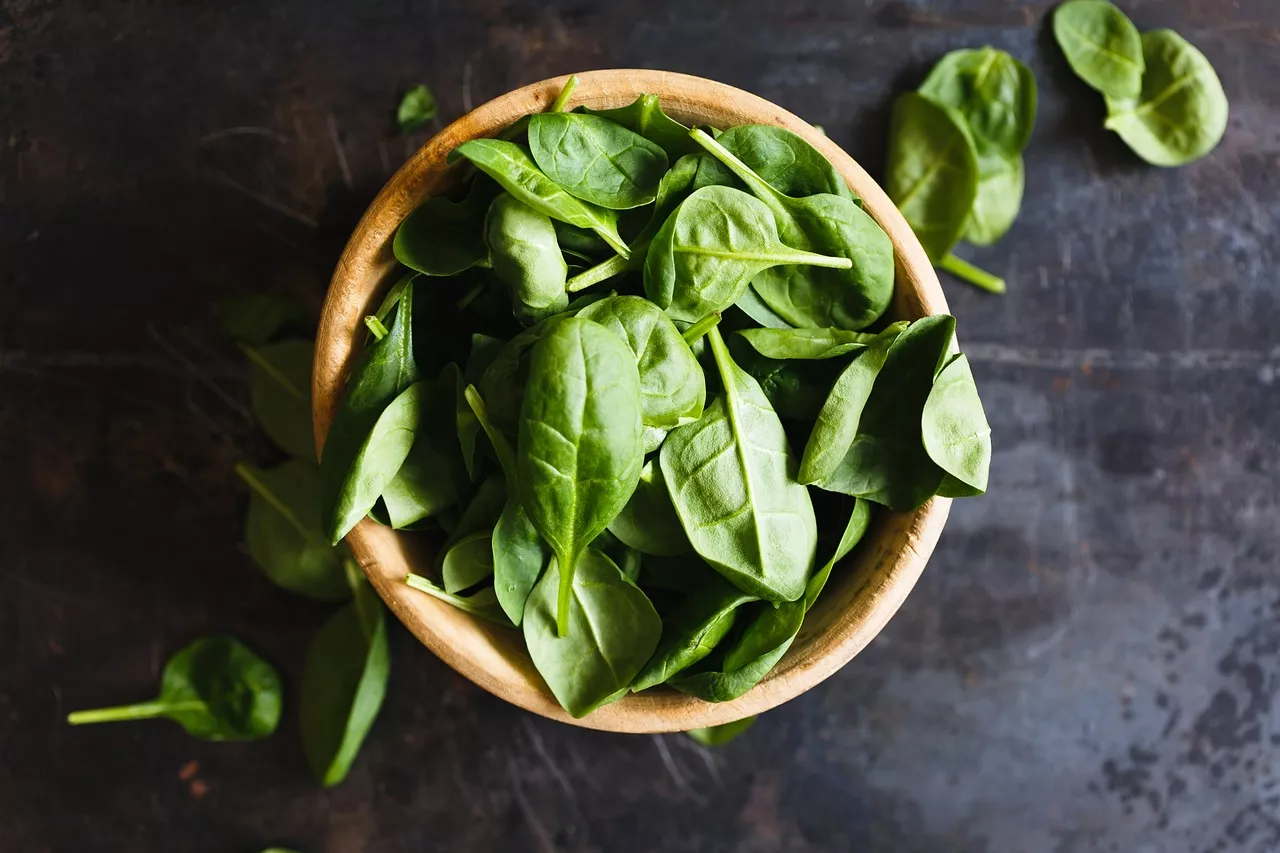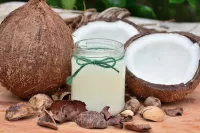Benefits of Going Green
Are you looking to improve your health and well-being? Look no further than the power of green foods. Going green isn't just for the environment; it can also benefit your body in numerous ways. In this article, we will take you on a culinary journey as we discover the benefits of going green with 5 delicious and nutritious green foods.
Whether you're a health enthusiast or someone looking to make small changes towards a healthier lifestyle, incorporating green foods into your diet can make a world of difference. From leafy greens like spinach and kale to nutrient-packed avocados and vibrant kiwis, these foods are not only tasty but also packed with essential vitamins, minerals, and antioxidants that can boost your immunity, improve digestion, and support weight management.
So, why wait? Join us as we delve into the world of green foods and learn how these vibrant and nutritious options can contribute to a healthier you. Get ready to tantalize your taste buds and feel the benefits of going green.
The Importance of Going Green in Your Diet
In today's fast-paced world, it's easy to fall into the trap of convenience foods that are often lacking in nutritional value. However, incorporating green foods into your diet is a simple yet effective way to ensure you're getting the essential nutrients your body needs to function optimally.
Green foods are rich in vitamins, minerals, and antioxidants that can help protect against chronic diseases and promote overall well-being. They are also low in calories and high in fiber, making them an excellent choice for weight management. Moreover, green foods are often packed with phytochemicals, which are natural compounds that have been shown to have various health benefits.
By including green foods in your diet, you can support your body's natural detoxification process, improve digestion, boost your immune system, and promote healthy skin. These benefits, combined with their delicious taste, make green foods a must-have in any healthy eating plan.
Benefits of Incorporating Green Foods into Your Diet
When it comes to nutrition, green foods are a powerhouse. They offer a wide range of benefits that can have a positive impact on your health and well-being. Let's explore some of the key advantages of incorporating green foods into your diet:
1. Boosted Immunity:
Green foods are rich in antioxidants, vitamins A, C, and E, and other immune-boosting nutrients that can help strengthen your body's defense against infections and diseases.
2. Improved Digestion:
The high fiber content in green foods promotes healthy digestion by aiding in regular bowel movements and preventing constipation. Leafy greens, in particular, are also known to support a healthy gut microbiome.
3. Weight Management:
Green foods are low in calories and high in fiber, making them an excellent choice for weight management. They help you feel full for longer, reducing the chances of overeating, and can contribute to maintaining a healthy weight.
4. Enhanced Heart Health:
Many green foods, such as spinach and kale, are rich in potassium, which can help lower blood pressure. They are also a good source of folate, which is essential for maintaining a healthy cardiovascular system.
5. Youthful Skin:
The antioxidants found in green foods can help protect your skin from damage caused by free radicals and environmental factors. They can also promote collagen production, leading to healthier and more youthful-looking skin.
In addition to these benefits, green foods have also been linked to improved brain function, reduced inflammation, and a lower risk of certain types of cancer. So, it's clear that incorporating green foods into your diet is a smart choice for your overall health.
Nutritional Value of Green Foods
Green foods are not only delicious but also packed with essential nutrients that your body needs to thrive. Let's take a closer look at the nutritional value of some popular green foods:
Leafy Greens
Leafy greens like spinach, kale, and Swiss chard are nutritional powerhouses. They are rich in vitamins A, C, and K, as well as folate, iron, and calcium. These greens are also low in calories and high in fiber, making them an excellent choice for weight management.
Avocado
Avocado is a unique fruit that is often referred to as a "superfood." It is rich in heart-healthy monounsaturated fats, which can help lower bad cholesterol levels. Avocados are also a good source of potassium, fiber, and vitamins C, E, and K.
Kiwi
Kiwi is a vibrant green fruit that is not only delicious but also packed with nutrients. It is an excellent source of vitamin C, vitamin K, and fiber. Kiwis also contain antioxidants and enzymes that can aid in digestion and support a healthy immune system.
Broccoli
Broccoli is a cruciferous vegetable that is known for its cancer-fighting properties. It is rich in vitamins A, C, and K, as well as folate and fiber. Broccoli also contains sulforaphane, a compound that has been shown to have anti-inflammatory and antioxidant effects.
Green Tea
Green tea is a popular beverage that is loaded with antioxidants called catechins. These antioxidants have been linked to a reduced risk of heart disease, cancer, and other chronic diseases. Green tea also contains caffeine, which can boost metabolism and improve focus.
Recipes Using Green Foods
Incorporating green foods into your daily meals can be both delicious and nutritious. Here are a few recipe ideas to get you started:br/>
1. Spinach and Avocado Salad
Ingredients:
2 cups of fresh spinach leaves
1 ripe avocado, sliced
1 small red onion, thinly sliced
1 tablespoon of olive oil
Juice of half a lemon
Salt and pepper to taste
Instructions:
1. In a large bowl, combine the spinach, avocado, and red onion.
2. In a small bowl, whisk together the olive oil, lemon juice, salt, and pepper.
3. Drizzle the dressing over the salad and toss gently to coat.
4. Serve immediately and enjoy this refreshing and nutrient-packed salad.
2. Kale and Kiwi Smoothie
Ingredients:
1 cup of kale leaves, stems removed
1 ripe kiwi, peeled and sliced
1 frozen banana
1 cup of almond milk
1 tablespoon of honey (optional)
Instructions:
1. In a blender, combine the kale, kiwi, frozen banana, almond milk, and honey (if using).
2. Blend on high speed until smooth and creamy.3. Pour into a glass and enjoy this vibrant and nutrient-rich smoothie.
3. Broccoli and Green Tea Stir-Fry
Ingredients:
2 cups of broccoli florets
1 green bell pepper, sliced
1 cup of snap peas
2 cloves of garlic, minced
1 tablespoon of sesame oil
2 tablespoons of low-sodium soy sauce
1 tablespoon of honey
1 teaspoon of grated ginger
1 teaspoon of cornstarch
1/4 cup of brewed green tea
Instructions:
1. In a large skillet, heat the sesame oil over medium heat.
2. Add the garlic and ginger and cook for 1 minute until fragrant.
3. Add the broccoli, bell pepper, and snap peas to the skillet and stir-fry for 3-4 minutes until crisp-tender.
4. In a small bowl, whisk together the soy sauce, honey, cornstarch, and green tea.
5. Pour the sauce over the vegetables and stir to coat.
6. Cook for another 2-3 minutes until the sauce has thickened.
7. Serve hot with steamed rice or quinoa for a satisfying and nutritious meal.
Tips for Incorporating Green Foods into Your Daily Routine
Incorporating green foods into your daily routine doesn't have to be complicated. Here are some simple tips to help you make green foods a regular part of your diet:
1. Start with Small Changes:
Begin by adding a handful of spinach or kale to your morning smoothie or substituting regular lettuce with mixed greens in your salads.
2. Experiment with Recipes:
Try new recipes that feature green foods as the main ingredient. This will help you discover new flavors and expand your culinary horizons.
3. Meal Prep:
Prepare your green foods in advance by washing and chopping them, so they're ready to use when you need them. This will save you time and make it easier to incorporate them into your meals.
4. Make Green Foods the Star:
Instead of treating green foods as a side dish, make them the star of your meals. Create colorful and nutritious salads, stir-fries, or even green smoothie bowls.
5. Get Creative:
Think outside the box and find unique ways to incorporate green foods into your favorite dishes. For example, you can add spinach to your omelets or blend avocado into your chocolate smoothies for a creamy texture.
Remember, the key is to make green foods a regular part of your diet, rather than just an occasional addition. By doing so, you'll reap the maximum benefits and enjoy a healthier and more vibrant life.br/>
The Environmental Impact of Consuming Green Foods
While the health benefits of green foods are undeniable, it's also important to consider their environmental impact. Green foods, especially those that are grown organically and locally, have a lower carbon footprint compared to processed foods or produce that has been transported long distances.
By choosing green foods, you're not only benefiting your own health but also contributing to a more sustainable future. Supporting local farmers and opting for organic and seasonal green foods can help reduce the use of harmful pesticides and promote biodiversity.
Additionally, reducing food waste by using all parts of the green foods, such as using vegetable scraps for homemade broth or composting, can further minimize your environmental impact. So, by going green, you're not only nourishing your body but also taking a step towards a healthier planet.
How to Shop for and Store Green Foods
When it comes to shopping for green foods, here are a few tips to keep in mind:
1. Choose Fresh and Vibrant Greens: Look for green foods that are fresh, vibrant, and free from blemishes. Avoid wilted or yellowing leaves, as they indicate a loss of freshness and nutritional value.
2. Opt for Organic: Whenever possible, choose organic green foods to minimize exposure to pesticides and other potentially harmful chemicals. Organic produce is also grown using sustainable farming practices.
3. Buy Local and Seasonal: Support local farmers and choose green foods that are in season. They are often fresher, more flavorful, and have a higher nutritional value compared to out-of-season produce that has been transported long distances.
4. Proper Storage: To maximize the shelf life of green foods, store them properly. Leafy greens like spinach and kale should be stored in a plastic bag in the refrigerator. Avocados should be stored at room temperature until ripe and then refrigerated to slow down the ripening process.
Green Food Alternatives for Different Dietary Needs
If you have specific dietary needs or restrictions, there are plenty of green food alternatives to suit your lifestyle:
- Vegetarian or Vegan: Green foods like leafy greens, avocados, broccoli, and green peas are excellent sources of protein for those following a vegetarian or vegan diet. Tofu, tempeh, and edamame are also great plant-based protein options.
- Gluten-Free: Many green foods are naturally gluten-free, making them a safe choice for those with gluten sensitivities or celiac disease. Examples include spinach, kale, avocados, and kiwis.
- Paleo: Leafy greens, avocados, and broccoli are all paleo-friendly green foods. They can be enjoyed as part of a balanced paleo diet.
- Ketogenic: Green foods like avocados, leafy greens, and green peppers are low in carbohydrates and can be incorporated into a ketogenic diet.
Remember to consult with a healthcare professional or registered dietitian to ensure you're meeting your specific dietary needs while enjoying the benefits of green foods.
Embracing a Greener Diet for a Healthier and Sustainable Future
Incorporating green foods into your diet is a simple and delicious way to improve your health and well-being. From leafy greens to avocados and kiwis, these vibrant and nutritious options are packed with essential vitamins, minerals, and antioxidants that can boost your immunity, improve digestion, and support weight management.
By going green, you not only benefit your own health but also contribute to a more sustainable future. Choosing organic, local, and seasonal green foods can help reduce your carbon footprint and support local farmers. So, let's embrace a greener diet and enjoy the countless benefits it brings to our bodies and the planet.

 Exploring the Fascinating World of Blue Food
Exploring the Fascinating World of Blue Food Discover the Nutritional Superpowers of a Brown Food Diet
Discover the Nutritional Superpowers of a Brown Food Diet



